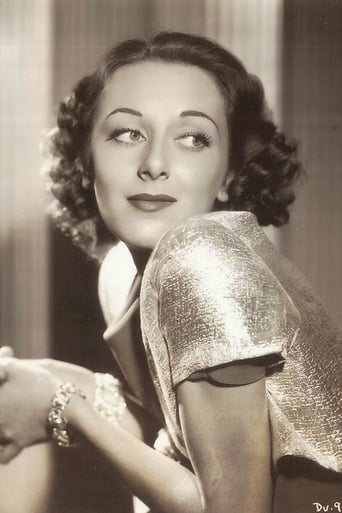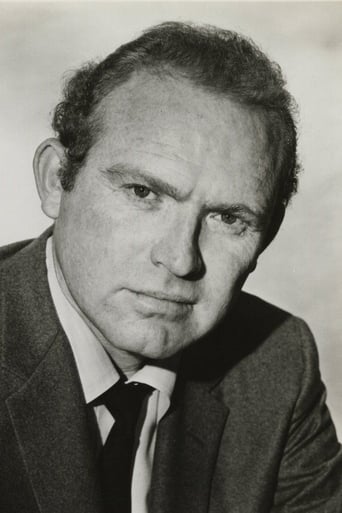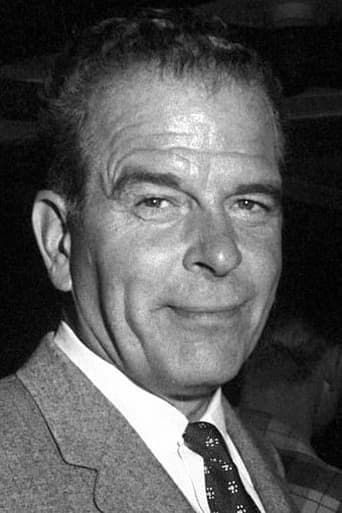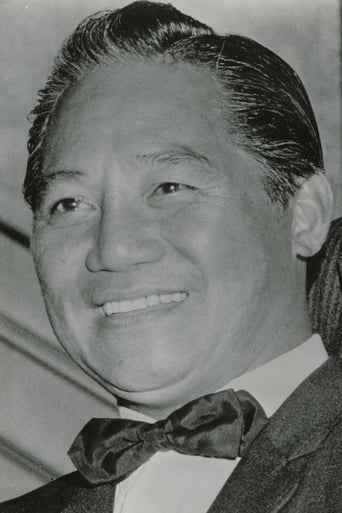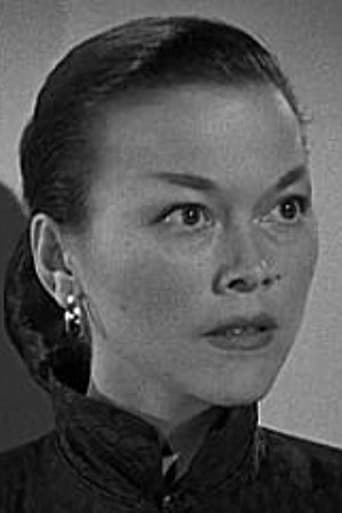bkoganbing
I Was An American Spy is a remarkable film for two reasons. First it's one of the few non-westerns that director Lesley Selander did in his career. Secondly I'm surprised that this story did not rate A picture treatment with a bigger name actress other than Ann Dvorak. Dvorak was on the downward slope of her career at this point.That being said Dvorak gives a wonderful performance as the saloon entertainer Claire Phillips who married a GI stationed in the Phillipines the day after Pearl Harbor. When her husband Douglas Kennedy is killed in action she not only survives among the Japanese, but builds an extensive spy network and helps prisoners with food and gives valuable intelligence for sabotage working closely with American and Filipino guerrillas. Her main contact is Gene Evans heading up all the guerrilla activity in the islands, a role similar to what John Wayne does in Back To Bataan. Remarkably when she was caught she was kept several months in prison and was found nearly starved to death according to the Wikipedia article on Claire Phillips. They kept her alive in the hopes she'd crack and give the Japanese information. The woman had the right stuff for sure, she never did. I doubt though her rescue was in real life quite as action filled as it is in this film.Notice should also be taken of Richard Loo once again playing a Japanese soldier, in this case a colonel she makes a monkey out of. Loo had a career of playing cruel Japanese soldiers during World War II. Loo is given a bit more depth in this film than normally.A nice B film that rated A picture treatment of a real American hero.
SimonJack
Based on real events, "I Was an American Spy" is several stories in one of valor and heroism. It is a unique film that includes spying, underground resistance, sabotage, and help for escapees and prisoners. It's a story about one of America's most successful volunteer spies in WWII – a rare example of Allied espionage in the Pacific theater. And, it is one of the best films about resistance to the Japanese by Philippine men and women. Many books have been written and films made about spying and underground resistance to the Nazis in Europe. But very few such examples exist with the Japanese in WW II. So, this film has added historical value as well. Others have commented on the movie plot, but I'll share some of the information I got when I tried to find out more about the all but forgotten hero of this film. Claire Phillips (nee, Snyder) was born in Michigan in 1908, but grew up in Portland, OR, where she graduated from high school. She joined a circus for a time, was a nightclub singer and was drawn to the theater. She joined a troupe that went to the Orient to play major cities. She landed in Manila for a few years where she married a Filipino and had a daughter, Dian. After five years, she divorced and returned to her home in Portland with her daughter. She became bored after several months and returned with Dian to Manila. That was in the fall of 1941. She married an American Army sergeant, John Phillips, during the Japanese invasion in December.The movie is about her life during that time until the end of the war. After the war, she and her daughter returned to Portland where she lived for the rest of her life. She received many honors and recognitions at home. Articles were written about her and she appeared on radio programs (TV wasn't widely available until after 1950). She received a free deed and keys to a new home in Beaverton, OR.In 1947, she wrote a book, "Manila Espionage," about her life and exploits during the war. This 1951 movie was based on her book and a magazine article. In 1951, she received the Medal of Freedom from the U.S. – the only woman who was honored based on the recommendation of General Douglas MacArthur. While some 200 total awards of the Medal of Freedom were made for WWII and Korea, most of those were to people from other nations for their heroics in helping Americans. But after a few years in the limelight, Phillips became restless and dissatisfied with working in a department store. She married again, and divorced. She became a heavy drinker and within nine years after the movie came out, Claire Phillips died of meningitis. She was 52. There was some interest in Portland in 2011 in providing a permanent memorial to this WWII hero. One can wonder why that wasn't done in the past. While her heroic efforts during the war have been honored, could there be other things about her life that most citizens would not want to hold up for people to model? My guess is that the answer is "Yes!" based on articles available online, and considerable changes or glossing over in the movie. For instance, magazine and newspaper accounts refer to Phillips as the "Manila Mata Hari." Yet, the movie shows her as a proper woman who runs a respectable club. In reality, her Tsubaki Club, was a high-priced, high class nightclub and brothel. Articles describe the girls and the matron performing for their high-ranking Japanese clients. Also, in the late 1950s, Phillips sued the U.S. government for $146,850 in compensation for her work. She received just $1,349 and the U.S. Claims Court decision read, "Much of her story was greatly exaggerated and at times almost fanciful." "I Was an American Spy" has one big fault – what seems to be a clear Hollywood altering of the story that detracts from the film. In several early scenes, Phillips tries to follow and find her husband who had to report to his unit on the front lines. Her character, played by Ann Dvorak, is almost hysterical when she insists she wants to go with him. In real life, Phillips had been around the American forces for years at Manila. She would have known that families don't go off to war with the troops. Common sense tells most of us that. And Phillips was not such a naive person as that. So, why would Hollywood alter her story to put this tripe in it? My guess is to paint a picture of the heroin precisely as a naive, innocent and clean person before the start of the war. That would also explain how the movie then accounts for her change of character – to someone who could kill and spy on the Japanese herself. We see a fictional scene in which she watches the Bataan death march and sees her husband shot and killed for stopping to drink from a well. After crying over her husband's body, she picks up a gun and shoots several times killing a very elderly Japanese soldier who came out of nowhere – with his rifle slung over his shoulder. Totally unbelievable! This film could have scored a 10 if the film makers had cut most of the opening hide-and-go-seek scenes, and instead replaced them with more scenes of the real underground help and resistance efforts. That would also have shown more of the deserving honor of the Filipinos, several of whom worked for Phillips.
blanche-2
Ann Dvorak is real-life spy Claire Phillips in "I Was an American Spy," a 1951 film also starring Gene Evans (known to baby boomers as the father in My Friend Flicka on TV) and with a prologue and an appearance at the end of the film by General Mark Clark.Though the movie takes the usual dramatic license, it does tell the true story of Claire Phillips, a woman living in Manila with her daughter when the war broke out. After she becomes a widow, Phillips helps the Americans by changing her identity and starting a gentlemen's club in Manila, which becomes popular with the Japanese soldiers. From her club, she provides information, food, boots, and medicine to the soldiers and prisoners of war (although if prisoners of war were mentioned in the film, I missed it). Her code name is "High Pockets" because she would put notes in her brassiere.If Claire Phillips did a third of what Ann Dvorak portrays in this film -- and I think actually she did much more -- one can see why she was given the Medal of Freedom. I do think the beginning, with her following her husband's battalion around is probably a little fanciful. I mean, walking around in the jungle by yourself - is anyone that foolhardy.Ann Dvorak is wonderful as Claire. She portrays the woman's bravery, finesse, sophistication, coolness, pluck, and her fear and suffering. An underrated actress who usually played supporting roles and retired from the screen after marrying her third husband in 1952, Dvorak shows that Warner Brothers should have given her better movies.I thought this was a very good, compelling story of a courageous woman who served our country.
